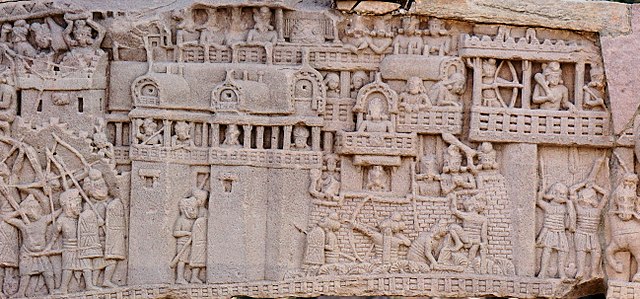The Gop temple is a Sun temple located at Zinavari village in Jamjodhpur Taluka of Jamnagar district, Gujarat, India. The Hindu temple is dated to the 6th century and is one of the earliest surviving stone temples in Gujarat. The original temple had a square plan, a mandapa and covered circumambulation passage which are lost, and a pyramidal masonry roof which is ruined but whose partial remains have survived. The temple has a height of 23 feet (7.0 m) which includes a small tower. The roof of the tower is decorated with arch-like gavaksha window shapes below an amalaka cogged wheel-shaped crown.
6th century Sun temple
East view
Southeast view
Northwest view
In Indian architecture, gavaksha or chandrashala are the terms most often used to describe the motif centred on an ogee, circular or horseshoe arch that decorates many examples of Indian rock-cut architecture and later Indian structural temples and other buildings. In its original form, the arch is shaped like the cross-section of a barrel vault. It is called a chaitya arch when used on the facade of a chaitya hall, around the single large window. In later forms it develops well beyond this type, and becomes a very flexible unit, "the most common motif of Hindu temple architecture". Gavākṣha is a Sanskrit word which means "bull's or cow's eye". In Hindu temples, their role is envisioned as symbolically radiating the light and splendour of the central icon in its sanctum. Alternatively, they are described as providing a window for the deity to gaze out into the world.
The earliest surviving chaitya arch, at the entrance to the Lomas Rishi Cave, 3rd century BC
The city of Kusinagara in the War over the Buddha's Relics, South Gate, Stupa no. 1, Sanchi.
Piled-up gavakshas at Osian, Jodhpur
Conjectural reconstruction of the main gate of Kusinagara circa 500 BCE adapted from this relief at Sanchi.








